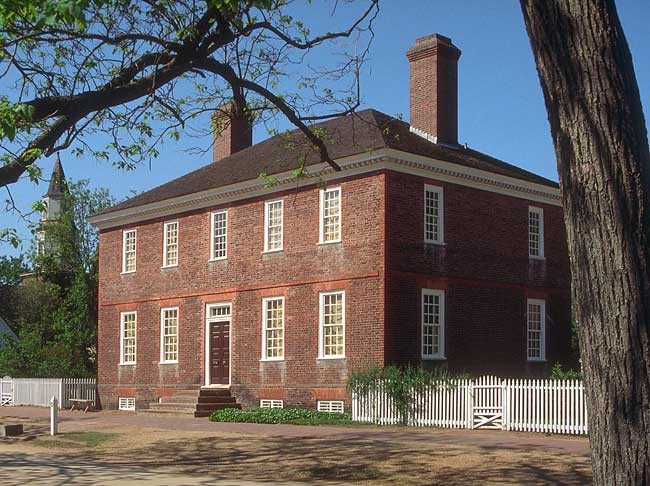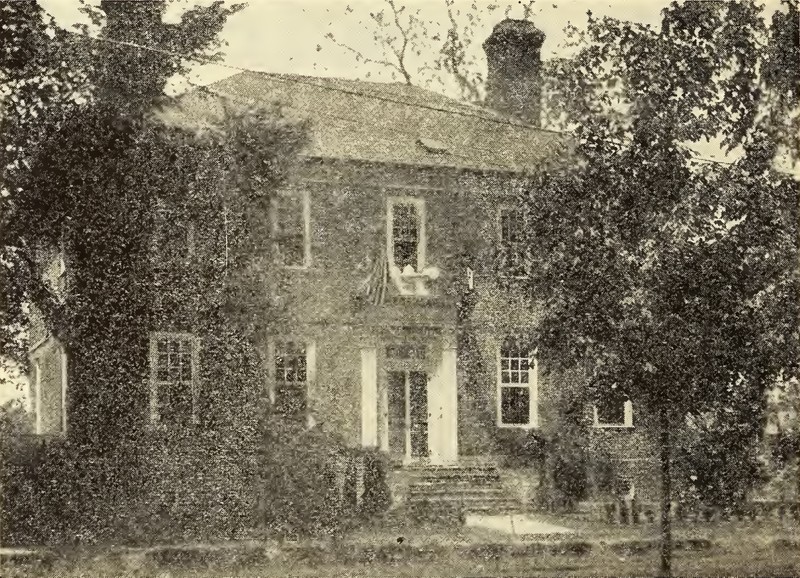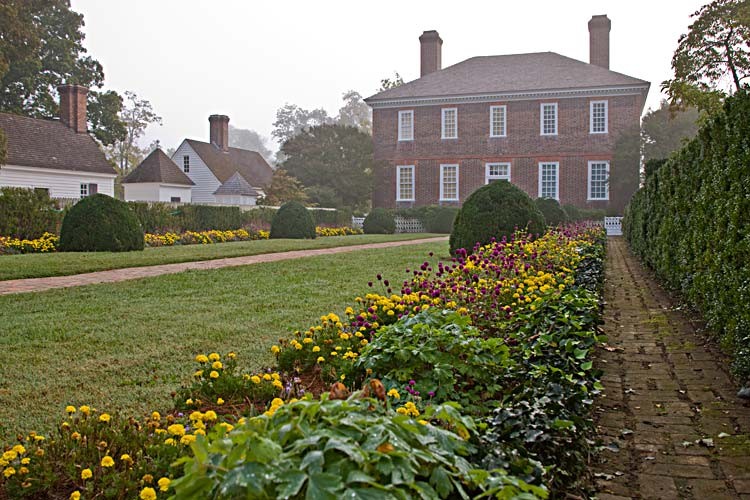Wythe House
Introduction
Text-to-speech Audio
The Wythe House was built in 1754 by Richard Taliaferro, George Wythe's father-in-law. Wythe would inherit the property following his marriage to Elizabeth Taliaferro. George Washington used the house as his headquarters just prior to the Battle of Yorktown. The building went through several owners until it came into the possession of Reverend Dr. W. A. R. Goodwin in 1926. From there, it would pass into the care of Colonial Williamsburg in 1938. It would be added to the National Register of Historic Places in 1969.
Images
Wythe House

Wythe House, ca. 1930

Wythe House Gardens

Backstory and Context
Text-to-speech Audio
The Wythe House, as it is known today, was built in 1754 by Richard Taliaferro, father-in-law to Declaration of Independence signatory George Wythe. Following Wythe's marriage to Taliaferro's daughter, the couple were given the house as a wedding present. During the Revolutionary War, General George Washington established his headquarters in the house just prior to the Battle of Yorktown. After his wife's death in 1787, Wythe moved to Richmond in 1791 to serve as a judge.
The house changed hands multiple times over the years until it was acquired by Reverend Dr. W. A. R. Goodwin in 1926. Goodwin is considered to be the "the Father of the Restoration of Colonial Williamsburg" due to his preservation efforts. Colonial Williamsburg would come into possession of the property in 1938. Today, the house is listed on the National Register of Historic Places as part of the Williamsburg Historic District.
The Wythe House has not changed much structurally since it was first constructed. It is a two-story red brick house built in the early Georgian style, based off of examples found in Palladio Londinensis, a 1734 book by architect William Salmon. The house has undergone two restorations, one from 1927-1931 and the other from 1939-1940, the latter of which saw the interior furnishings replaced with those more appropriate for the 18th century.
The house changed hands multiple times over the years until it was acquired by Reverend Dr. W. A. R. Goodwin in 1926. Goodwin is considered to be the "the Father of the Restoration of Colonial Williamsburg" due to his preservation efforts. Colonial Williamsburg would come into possession of the property in 1938. Today, the house is listed on the National Register of Historic Places as part of the Williamsburg Historic District.
The Wythe House has not changed much structurally since it was first constructed. It is a two-story red brick house built in the early Georgian style, based off of examples found in Palladio Londinensis, a 1734 book by architect William Salmon. The house has undergone two restorations, one from 1927-1931 and the other from 1939-1940, the latter of which saw the interior furnishings replaced with those more appropriate for the 18th century.
Sources
National Register of Historic Places Nomination Form. National Parks Service. http://www.dhr.Virginia.gov/registers/Cities/Williamsburg/137-0058_Wythe_House_1970_Final_Nomination_NHL.pdf.
George Wythe House. The Colonial Williamsburg Foundation. http://www.history.org/Almanack/places/hb/hbwythe.cfm#viewMedia.
George Wythe House. The Colonial Williamsburg Foundation. http://www.history.org/Almanack/places/hb/hbwythe.cfm#viewMedia.
